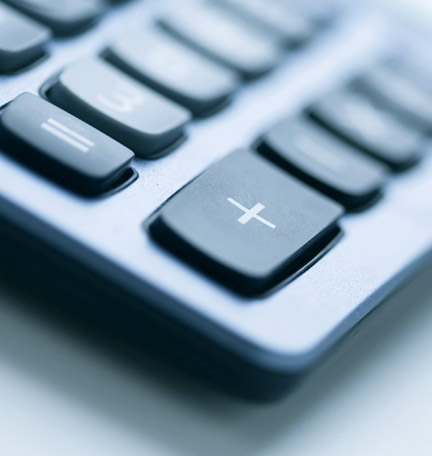What you should know about self employment taxes
Self-employment has many potential advantages, including being able to set your own hours or work from home. But it comes with some headaches, too — in particular, preparing, filing, and paying self-employment taxes.
If you've been an employee, you've probably noted on your paychecks where your employer deducted Medicare and Social Security contributions from each of your checks. As an employee, your employer pays half of your Medicare and Social Security, and the remainder is deducted from your pay. If you're self-employed, you make both parts of these contributions yourself. You pay this self-employment tax in addition to income tax and any other applicable taxes.
When you're self-employed and subject to the self-employment tax, dealing with taxes is a quarterly activity that requires considerable preparation and recordkeeping on your part. These four steps can help you get ready to file.
1. Find out if the IRS thinks you're self-employed.
If you're in business for yourself, work as an independent contractor or sole proprietor, or are a member of a partnership that carries on a trade or business, it's likely you're required to pay self-employment taxes. Even if you are employed full time by someone other than yourself, but have a business outside of your job, the IRS may consider you to be a self-employed individual, even if this is part time. An exception to this would be a hobby or income from a sporadic activity.
2. Determine whether you meet the self-employment income threshold.
Most people who are self-employed have to pay self-employment taxes on their income. If your net earnings meet the IRS threshold, you must pay self-employment taxes in addition to your other obligations, including income tax.
Determine your earnings by subtracting your business expenses from your business income. If what's left — your profit — is more than the IRS threshold, you’ll need to pay taxes on that amount.
3. Determine if you need to pay quarterly taxes.
Generally, the IRS requires that self-employed individuals pay estimated taxes every quarter. This includes self-employment tax as well as income tax.
The IRS provides guidelines on who needs to file estimated quarterly taxes. There are some exceptions if you expect to owe a small amount of tax.
4. Figure out how much you owe.
The IRS offers a worksheet to help you figure out how much you'll owe each quarter. This is updated regularly and walks through various credits and deductions.
When you're self-employed, you may be able to deduct certain kinds of business expenses from your tax bill. For instance, if you work from home, you may be able to deduct a portion of your mortgage or rent, as well as a portion of your utility bills, if you meet the strict guidelines for home offices. You may also be able to deduct some or all of any expenses tied to client lunches or a cellphone you use primarily for work.
Keep detailed records of all business expenses throughout the year. Consider using a separate credit card or business bank account to make it easier to keep track of your business expenses.
Keep in mind that you may be charged a penalty if you underestimate your payments or pay late. A tax professional with experience working with self-employed people can help you understand these and other tax-related issues
For more information on filing taxes, visit the Regions Tax Center.





